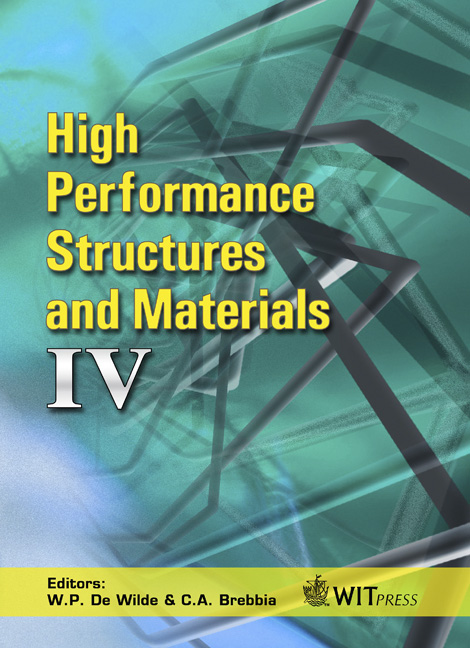Effect Of Post-cure Condition On Interfacial Properties Of Glass Fiber/vinylester Composites
Price
Free (open access)
Transaction
Volume
97
Pages
10
Page Range
129 - 138
Published
2008
Size
1,235 kb
Paper DOI
10.2495/HPSM080141
Copyright
WIT Press
Author(s)
T. Ota & T. Matsuoka
Abstract
Microdroplet tests were carried out in order to investigate the effect of post-cure conditions on the interfacial properties of glass fiber/vinylester composites. Microdroplet test specimens were postcured at 80°C for a period varying from 4h to 24h. The load increased linearly until the maximum pull-out load, where the load had reached critical load, after which the load reduced rapidly in all the post-cure conditions. Shear debonding occurred in the fiber/matrix interface at the maximum pull-out load. The maximum load increased with a longer embedded length in all the post-cure conditions. In addition, the maximum load was larger with a longer post-cure time. In the case of PC8h and PC16h, debonding occurred at a short embedded length in contrast to other post-cure conditions. The post-cure condition of PC8h and PC16h improved the interfacial shear strength (IFSS) in comparison with that of PC4h. The post-cure condition of PC24h decreased the IFSS as compared with that of PC16h. The sizes of the meniscus for both PC8h and PC16h were larger than that for both PC0h and PC4h. The surface of glass fiber was relatively smooth in all the post-cure conditions. The residual thermal stress was increased due to post-cure. The mechanical anchoring contributed to the increase in the IFSS. Keywords: post-cure, glass/vinylester composites, microdroplet test, interfacial properties, mechanical anchoring. 1 Introduction Fiber reinforced polymeric matrix (FRP) composites are widely used in the aircraft industry and infrastructure because of excellent specific strength, specific
Keywords
post-cure, glass/vinylester composites, microdroplet test, interfacial properties, mechanical anchoring.





